Highlights
- OpenAI introduces Sora, transforming text prompts into one-minute videos.
- Exclusive access for select creators, emphasizing ethical use of technology.
- Sam Altman showcases Sora’s capabilities with user-generated prompts.
- Safety measures in place to prevent the creation of harmful content.
OpenAI, the innovative force behind ChatGPT, has once again pushed the boundaries of artificial intelligence with the introduction of Sora, a cutting-edge AI model capable of transforming text prompts into one-minute videos.
This groundbreaking tool not only showcases the advancements in AI but more importantly has opened up a new realm of possibilities for creators across various domains.
1) What https://t.co/w6b9T1WWue
— Sam Altman (@sama) February 15, 2024
Let’s dive into what Sora is and if it presents some ethical conundrums.
“We’re teaching AI to understand and simulate the physical world in motion, with the goal of training models that help people solve problems that require real-world interaction,” OpenAI wrote in the post.
“Sora is able to generate complex scenes with multiple characters, specific types of motion, and accurate details of the subject and background,” OpenAI added in the post. “The model understands not only what the user has asked for in the prompt, but also how those things exist in the physical world.”
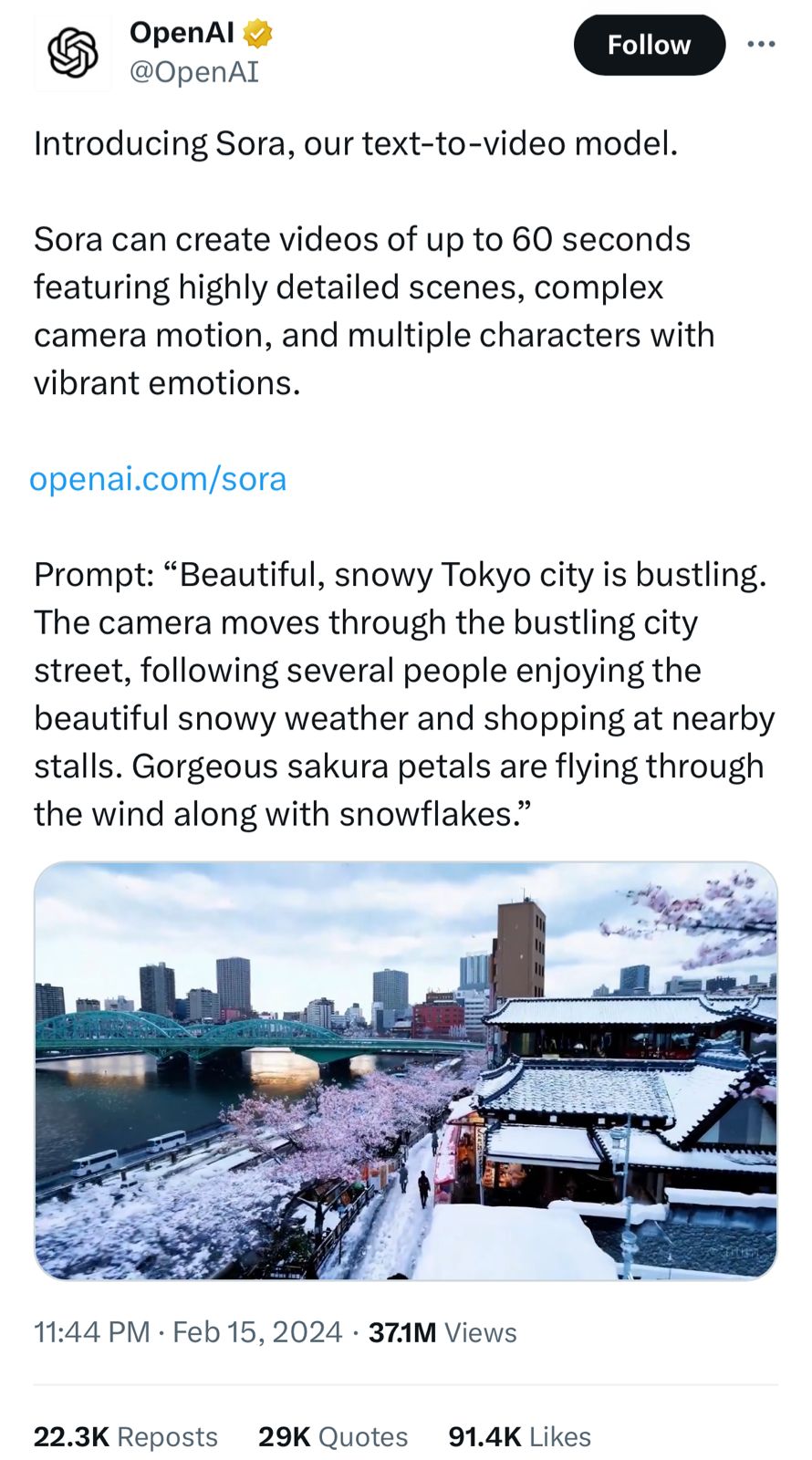
“We are working with red teamers — domain experts in areas like misinformation, hateful content and bias — who will be adversarially testing the model,” the post said. “We’re also building tools to help detect misleading content such as a detection classifier that can tell when a video was generated by Sora. We plan to include C2PA metadata in the future if we deploy the model in an OpenAI product.”
“The agency is taking this action in light of surging complaints around impersonation fraud, as well as public outcry about the harms caused to consumers and to impersonated individuals,” the FTC wrote in a news release. “Emerging technology — including AI-generated deepfakes — threatens to turbocharge this scourge, and the FTC is committed to using all of its tools to detect, deter, and halt impersonation fraud.”
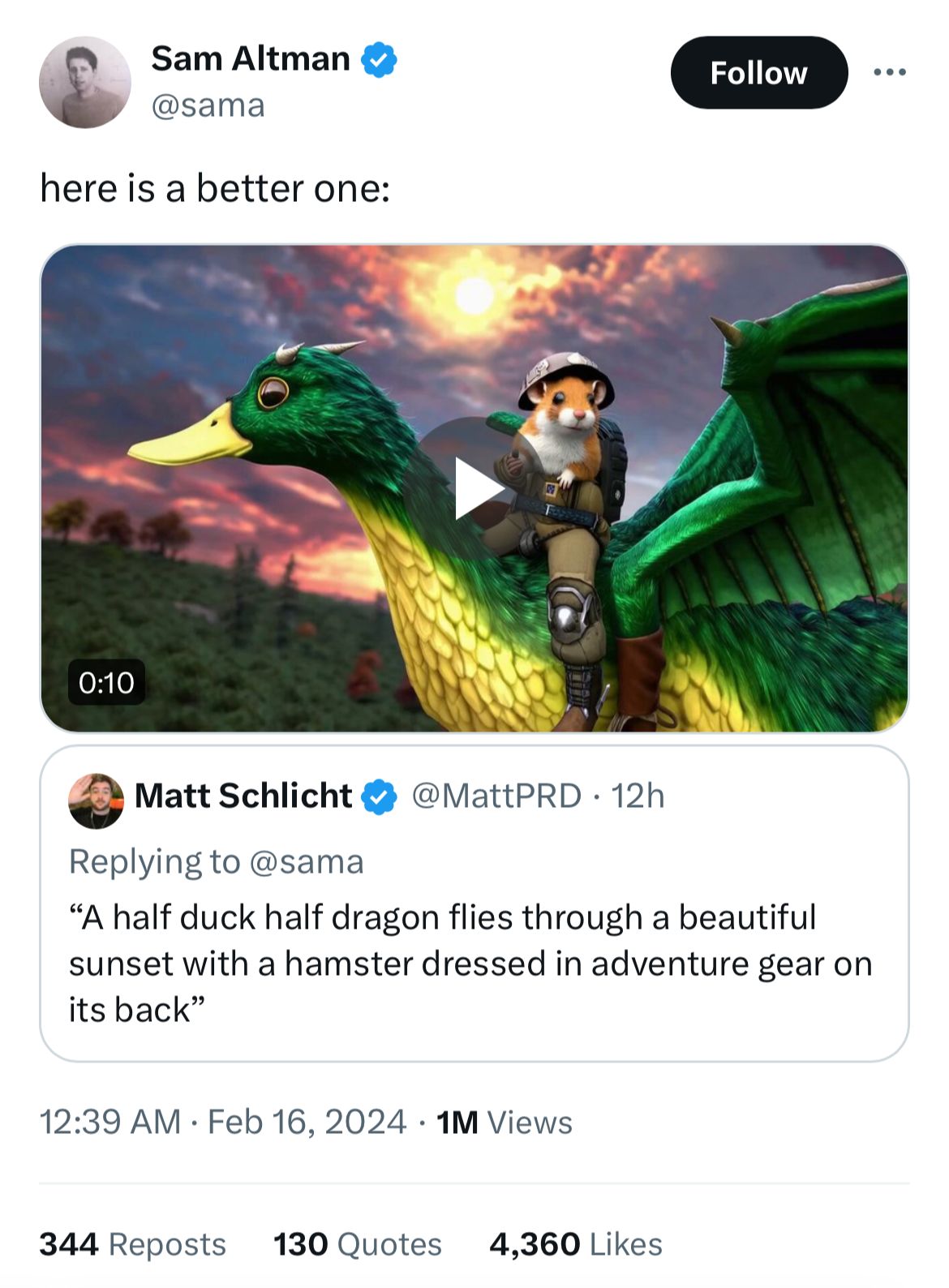
Sora: A New Way To Generate Videos
https://t.co/qbj02M4ng8 pic.twitter.com/EvngqF2ZIX
— Sam Altman (@sama) February 15, 2024
Sora stands out by its ability to craft complex scenes filled with multiple characters in motion, interpreting and expressing emotions derived directly from textual descriptions.
The technology underlying Sora remains a closely guarded secret, but its potential applications span content creation, filmmaking, animations, and beyond, signaling a significant leap forward in the field of generative AI.
As of right now, Sora remains an exclusive offering, accessible to a select group of creators handpicked by OpenAI.
https://t.co/rmk9zI0oqO pic.twitter.com/WanFKOzdIw
— Sam Altman (@sama) February 15, 2024
More than the amount of extensive processing requirements it would put on OpenAI’s servers, the decision to limit access is a cautious approach towards deploying such powerful technology, ensuring that it’s used responsibly and ethically.
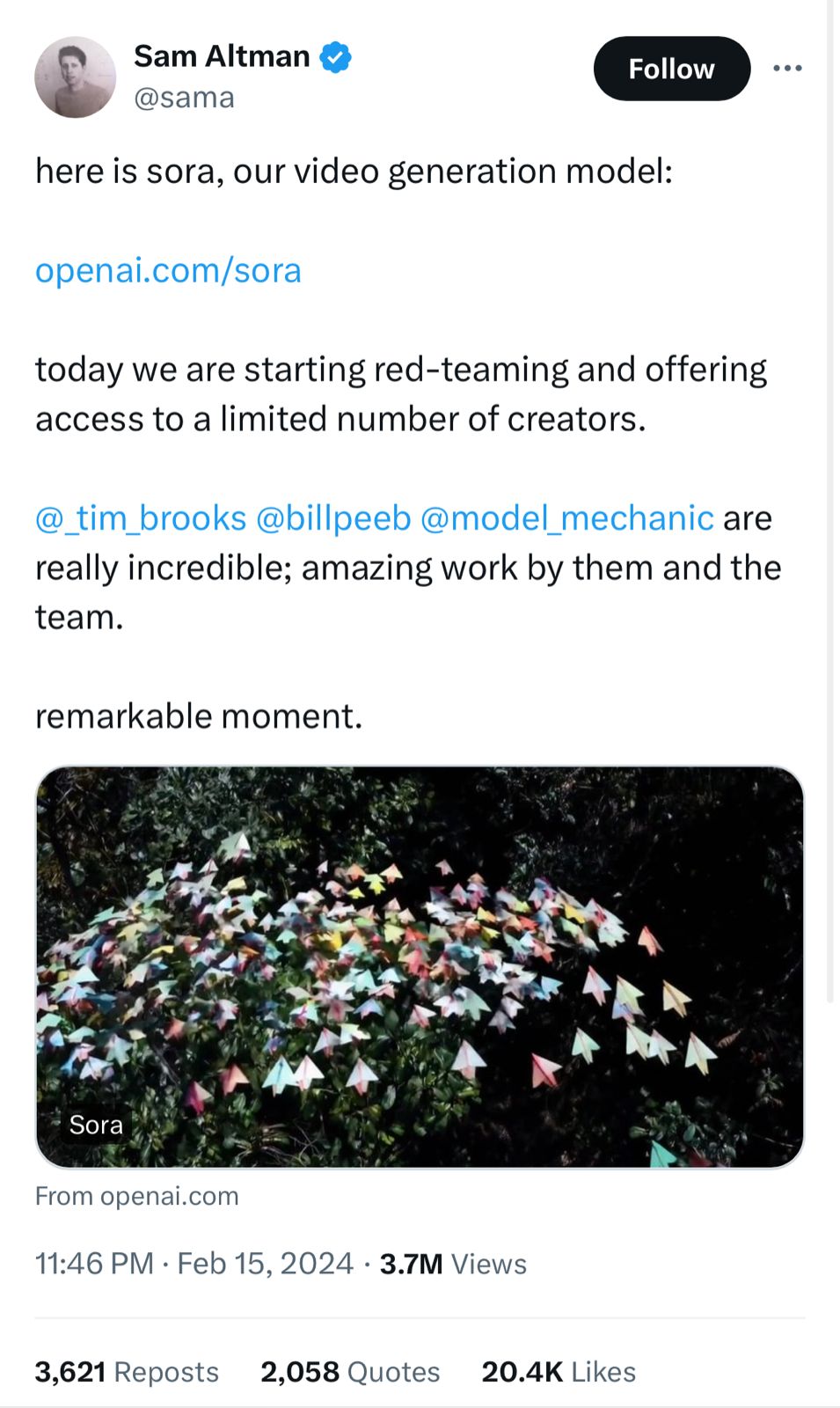
Despite this, the glimpses into Sora’s capabilities shared by OpenAI CEO Sam Altman and others have sparked widespread excitement and anticipation for what this tool could mean for the future of digital content creation.
Sam Altman Shares Sora Video Samples
https://t.co/uCuhUPv51N pic.twitter.com/nej4TIwgaP
— Sam Altman (@sama) February 15, 2024
Sam Altman’s invitation for video caption suggestions on his X account resulted in a flurry of creative prompts from users, with the outcomes shared by Altman showcasing the impressively realistic videos generated by Sora.
This interaction not only successfully demonstrated Sora’s capabilities but also its potential to exceed expectations in rendering detailed and emotionally resonant videos.
https://t.co/SOUoXiSMBY pic.twitter.com/JB4zOjmbTp
— Sam Altman (@sama) February 15, 2024
However, the excitement surrounding Sora’s capabilities must be tempered by concerns over potential misuse.
OpenAI has proactively addressed these worries by implementing robust safety measures to filter out prompts that could lead to the creation of harmful content, including violence, adult media, and celebrity-related deepfakes.
The Race for AI Video and Ethical Boundaries

The announcement of Sora comes shortly after Google revealed its text-to-video generator, VideoPoet, marking a burgeoning interest in AI-powered content generation tools within the tech industry.
While both services currently remain out of reach for the general public and even paid subscribers, their development signifies a pivotal moment in the evolution of AI technologies.
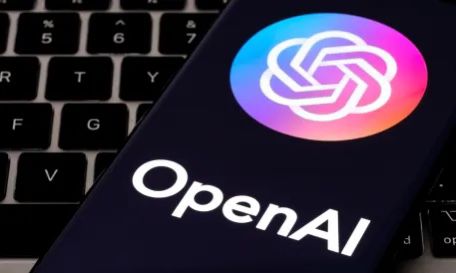
As OpenAI continues to refine Sora, the technology space awaits further details on its eventual release.
The promise of an AI-powered video generator like Sora raises compelling questions about the future of creativity, the ethics of AI, and how we engage with digital media.
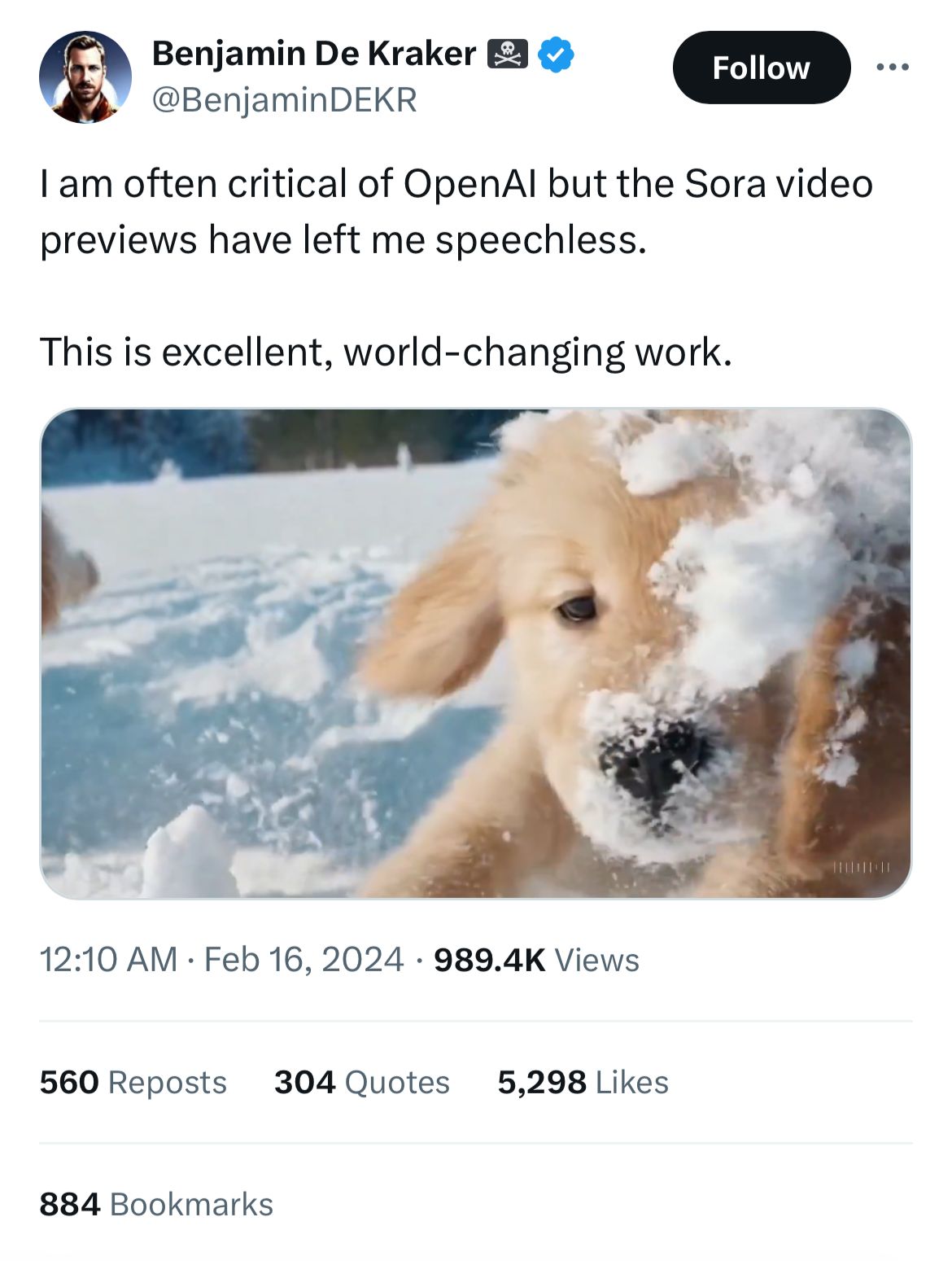
FAQs
What is Sora, and how does it work?
Sora is OpenAI’s latest AI model that generates one-minute videos from text prompts.
While specific details about its technology are not disclosed, Sora can create complex scenes with emotional depth, marking a significant advancement in AI.
Who can access Sora currently?
As of now, Sora is available to a select group of creators chosen by OpenAI. The limitation on access ensures responsible use and allows OpenAI to manage the ethical implications of this powerful tool.
What kind of content can Sora create?
Sora is designed to generate videos across a broad spectrum of uses, including content creation, filmmaking, and animations. It interprets text prompts to produce videos with multiple characters and emotions.
How is OpenAI addressing potential misuse of Sora?
OpenAI has implemented stringent safety measures to filter out prompts leading to violence, adult content, celebrity deepfakes, or any harmful material, ensuring Sora’s ethical application.
What sets Sora apart from other AI video generators like Google’s VideoPoet?
Sora and Google’s VideoPoet both represent the forefront of AI-generated video content.
However, Sora’s unique capability to interpret and express complex emotions in videos differentiates it, showcasing OpenAI’s emphasis on creating emotionally resonant AI-generated content.
Is Sora safe?
On its official website, OpenAI has stated that it has been taking several safety measures before making Sora accessible in its products.
The company went on to assert that they are working with a team of domain experts specific to misinformation, hateful content, and bias.
These experts will be adversarially testing Sora. Besides, the company is also building tools like a detection classifier that can detect misleading content and tell if a video was generated by Sora.
“We’ll be engaging policymakers, educators, and artists around the world to understand their concerns and to identify positive use cases for this new technology.
Despite extensive research and testing, we cannot predict all of the beneficial ways people will use our technology, nor all the ways people will abuse it. That’s why we believe that learning from real-world use is a critical component of creating and releasing increasingly safe Al systems over time,” reads the official website.
OpenAl also said that it will be including C2PA metadata in the future if we deploy the model in an OpenAI product. In simple terms, C2PA is an open technical standard that allows publishers, companies, and others to embed metadata in media to verify its origin and related information.
The company has also said that it is leveraging the existing safety measures that have been built into its products that use DALL E-3.
Besides, the text classifier deployed by OpenAI will keep a check and even reject prompts that violate the company’s usage policy which include, requests of extreme violence, sexual content, hateful imagery, celebrity likeness, or IP of others.
The company also has strong image classifiers that will review the frames of every video to ensure that they align with the company’s usage policy.
Also Read: OpenAI and Jony Ive Collaborate on AI Hardware Project, Shifting OpenAI’s Focus
Also Read: OpenAI Unveils ChatGPT Memory Features for Enhanced User Experience
Also Read: OpenAI Strengthens Ties with Indian Tech Community, Announces Developer Summits
